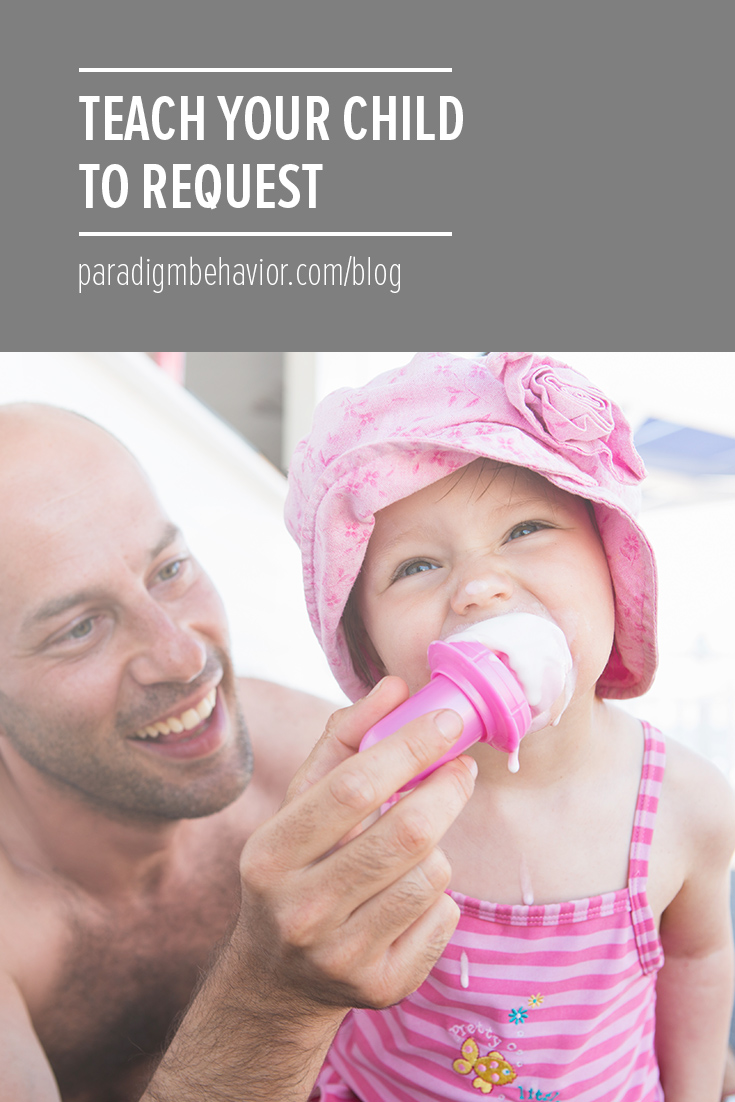I had a “practice what you preach” moment over the weekend. I’ve been warned by fellow mothers that with my child, either all of my behavior background would go out the window, or my home would be full of behavior plans. I like to think I’m somewhere in between. This weekend, though, I had that put to the test with my daughter when I introduced Mand Training. It was tough!
Did I make her cry? Yes.
Did she mand (request with her words)? Yes.
Did I feel bad for pushing her? Absolutely.
Do I go cold turkey and wait her out? No.
Mand Training (requesting) is not just holding out and waiting for my child to talk. Instead, I’m providing support (prompts) by having her copy what I say (verbal prompt). Eventually I got to a point where I was able to fade my verbal prompt. I just held up her juice and she said “joosh” in her tiny voice. It only happened once, but I’ll take it!
I’ve done Mand Training so many times with other children, but with my daughter, I couldn’t get outside of my own head. I kept saying,
Is she ready?
Does she have the skill?
She’s not talking much.
But, other children are talking. (Oh I know. I’m guilty of comparing, too, and I just need to stop)
Her babbling usually happened on her own terms. If we asked her to “say, mom,” she would repeat it at least somewhat consistently. Most of the time, though, she resorted to her short list of baby signs and left us guessing what she wanted. If we asked her if she wanted milk, and she didn’t, she’d simply wave her hands to tell us “no.”
So, why did I start pushing my daughter this weekend?
I was mentally prepared.
She started saying “peekaboo” on her own.
She started saying more words with small prompts.
Because she’d started talking more on her own, I knew that she would be more receptive to mand training. I talked myself through and tried it out to see if she was truly ready. She wasn’t exactly happy about it, but I’m proud of her (and myself). The only thing I need to remember is to be consistent with her.
This weekend, when working on her mands, there was a funny moment when she started to cry, but then she snapped out of it and said “joosh.” It was the same sort of light bulb moment for me and my daughter that I see in a lot of the children I work with. Once they make the connection that they can use their words to get what they want, you start to see their language grow. Just remember, it’s important to provide opportunities to request so they get plenty of practice!
Want to learn more? Check out our Mand Training Parent Guides in our e-store. You’ll learn why Mand Training is one of the first ABA programs we teach and how it reduces problem behaviors. You’ll also see a breakdown of the the term “Mand Training,” step-by-step procedures on how to use it in your own home, and a data sheet from me that shows how to track your child’s progress.








ABA therapy can get very personal when it comes to offering information about your day-to-day lives. Learn to build a relationship with your BCBA by attending parent training sessions so that both of you are collaborating and addressing ongoing issues in your home.